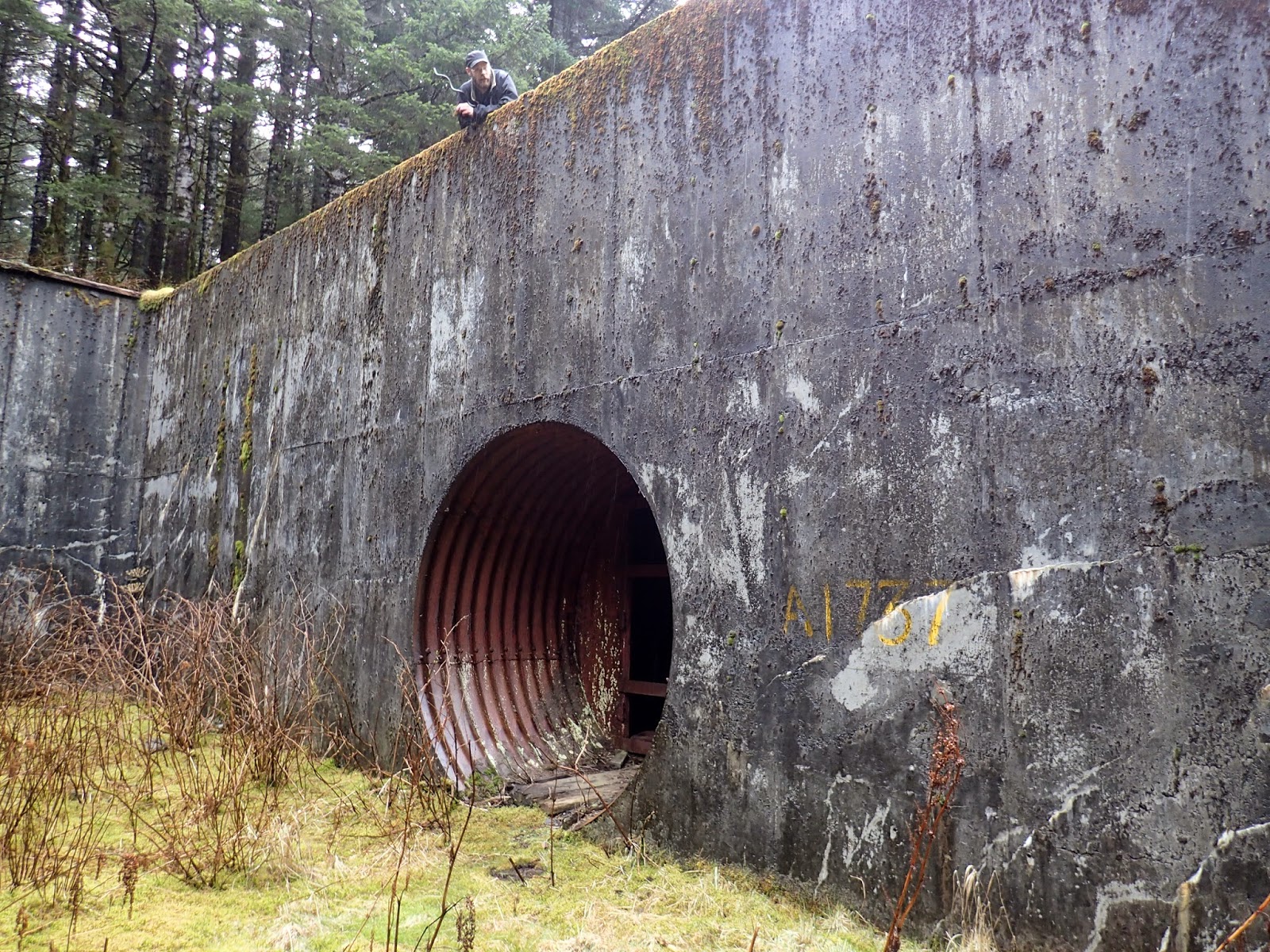Wednesday, April 29, 2015
Sun
We went to our secret sunny spot, then our super secret sunny spot, then the light shelter and the DEC. I realized I was wrong. BC, DEC, HDOPs, and whatnot are ALMOST the same, but different in square footage and being set up for instruments, like azimuth scope and maybe depression position finder. Ok I'm guessing.
Friday, April 24, 2015
Elephant
Bring your elephants!
Or just a boat load of ammo
Oh look, you can actually see the rain! Thank you.
Movie set
See doorway and semi-subterranean structure.
Crawl into...not sure about these.
One deeply buried
One now exposed. Not made of the Armco so not a magazine or maybe? or? hmm. These are near the other two Panama mounts for the 155mm guns.
A lot of the questions I have asked in the past I have determined. Like pit city as foxholes. Building #s etc.
How many names? BC, DEC, HDOP, oh, another three digit one I saw today, BES. All the same dang structure, different purposes.
FLOWER POWER. Literally. 69 original.
1966. That's where that puzzle piece went. I was lookin for that, right up in the sky.
The remains of the P&S.
There are so many pictures I have not shared. So if you feeling likes it's too much, keep in mind I have spared you.
Tuesday, April 21, 2015
Friday, April 17, 2015
The good side
Banya. Really don't want to be here anymore without a weekly banya.
ever so slightly falling off the cliff
DEC filled with water
See the whale spout?
I wrote an article, for the general public, in two hours. In an edit days later, I changed three words:
Whale
watching from Kodiak’s historic sites
Spring is a
great time to visit Narrow Cape and view migrating grey whales. The giant
creatures swim close to shore on their way to feeding grounds in the Bering
Sea, particularly cows with their newborn calves. My daughter Abigail and I
watch them from our favorite perch. It
is on the cape above Fossil Beach, overlooking Ugak Bay. For the best views, we
move back and forth between two World War II searchlight shelters. Now stripped of
their doors, wiring, and just about anything else that could be removed, these
concrete structures were a part of a remote observation post in a greater strategic
defense network. Just as Abby and I scan the ocean for shapes and movement,
servicemen once watched the same waters. I can’t help thinking about them as we
sit by the bunkers.
Alaska’s
role in defending the United States’ Pacific interests emerged from War Plan
Orange, developed after the First World War.
Congress adopted a plan to form a defense triangle between
Panama, Hawaii, and Alaska. The
department of defense established a Kodiak naval base in 1939, but it was not
until the attack on Pearl Harbor in 1941 that Japanese hostilities hit home.
Six months after the attack the Japanese bombed Dutch Harbor on Unalaska Island
and occupied the Aleutian islands of Attu and Kiska.
For a period of time, Kodiak’s base played a major role in the Aleutian campaign, serving as Alaska Defense Command from October 1942 through March 1943. The seemingly diminutive Harbor Defense Observation Post at Narrow Cape was a part of this effort, and it served a key function: to watch for enemy ships and aircraft! We all know Kodiak is dark in the winter. Searchlights operated from the bunkers could illuminate up to thirty miles in good conditions. Very bright and hot, they were controlled by the nearby DEC’s or distant electrical control “pillboxes”, like the one you drive by at Gibson Cove on the way in or out of Kodiak.
We were the last ones to leave. The truck got stuck in 4wd LOW. Drove 25mph all the way back. My car is kaput too. I didn;t think it would be that bad to not have transportation in Kodiak. Yea, no.
Subscribe to:
Posts (Atom)






















































